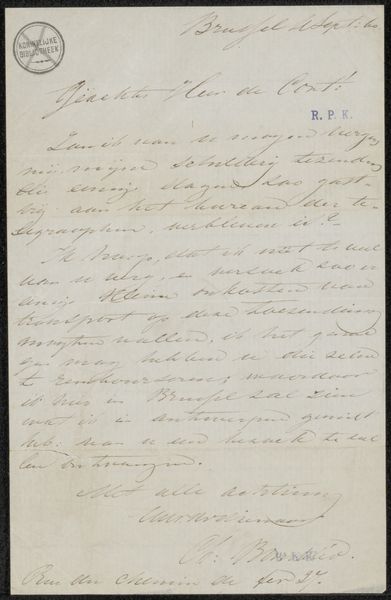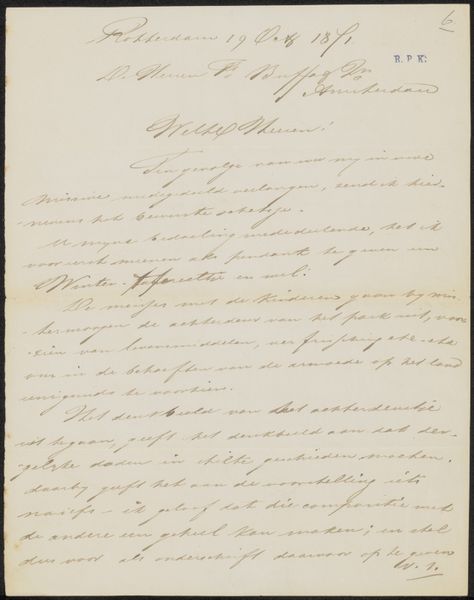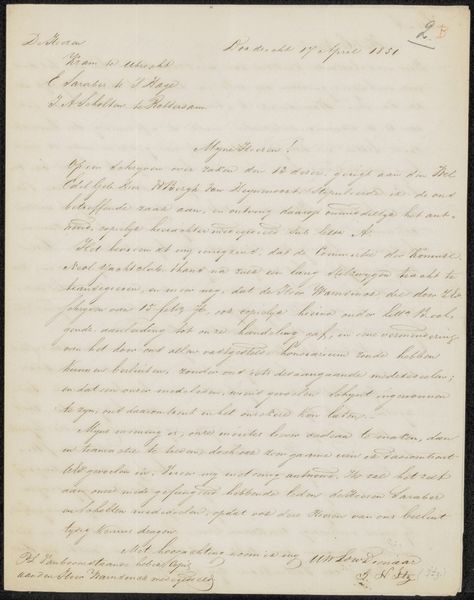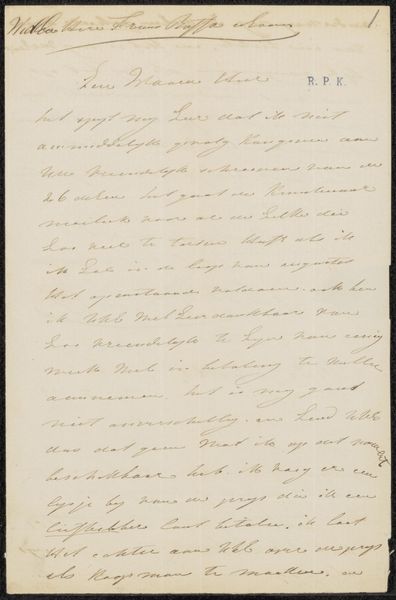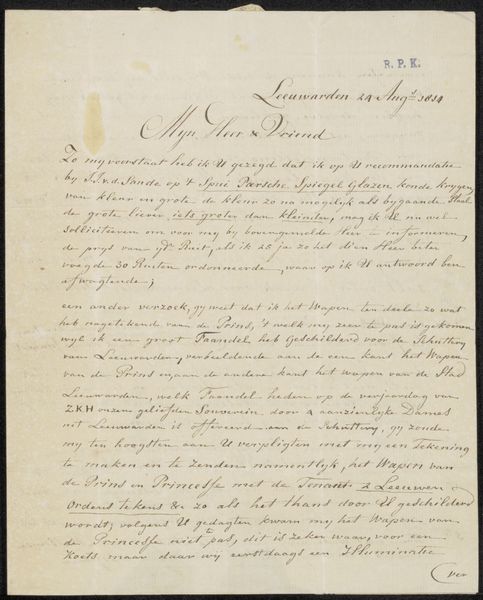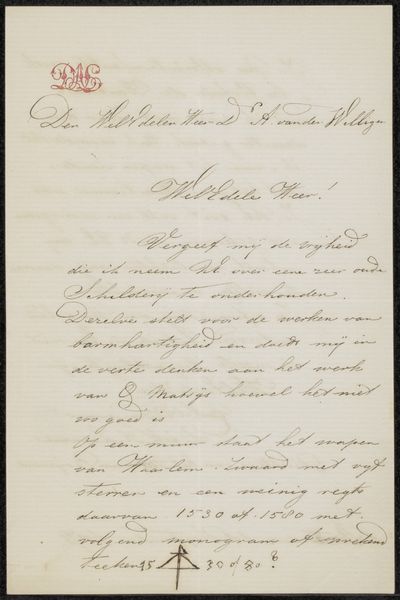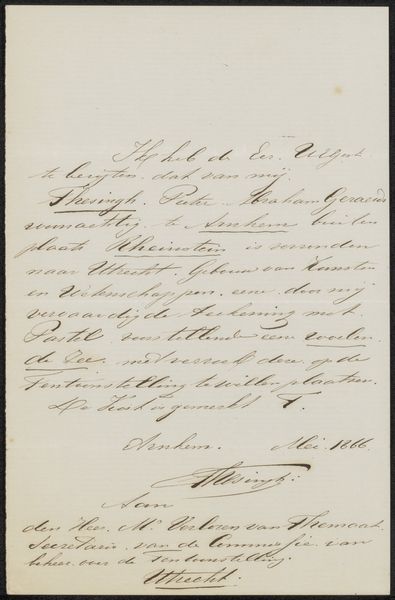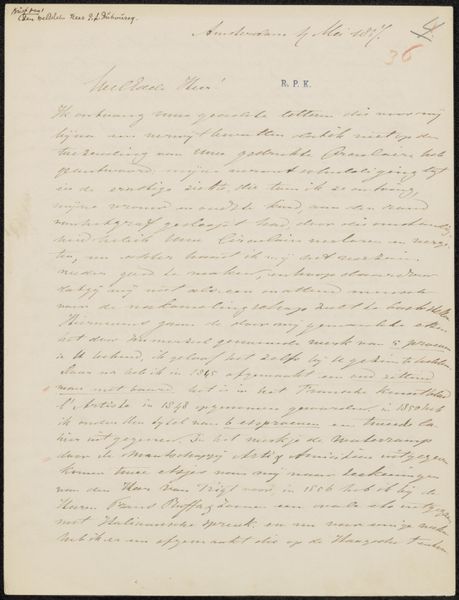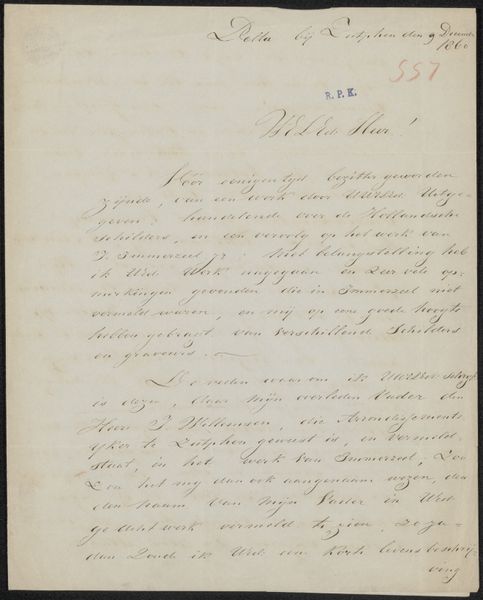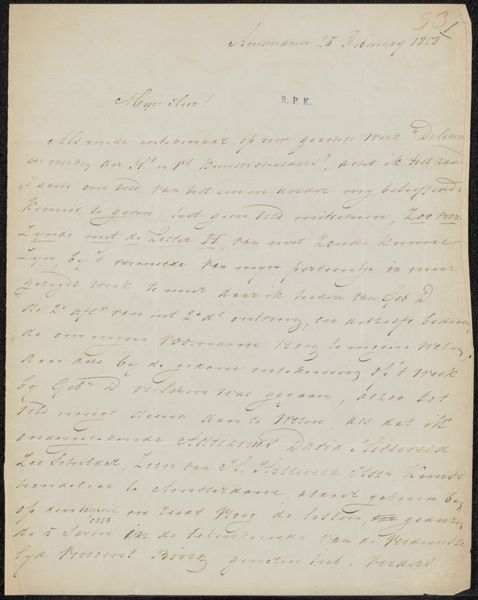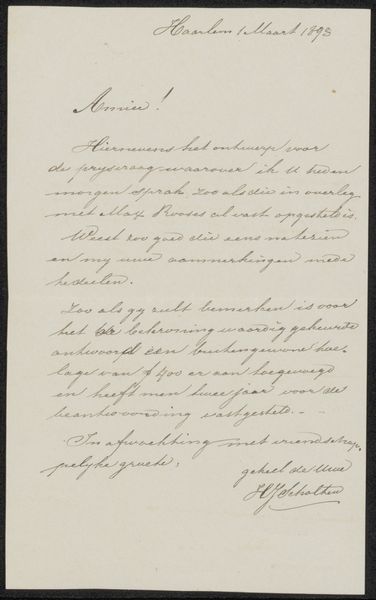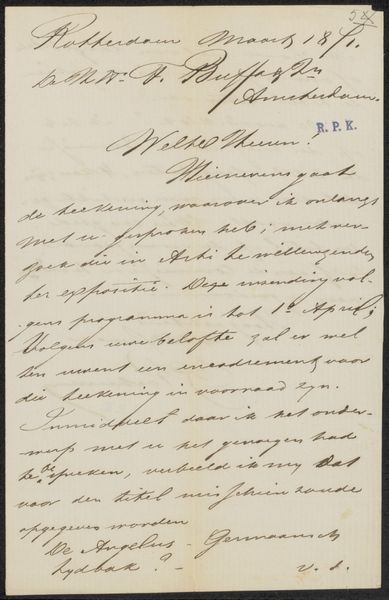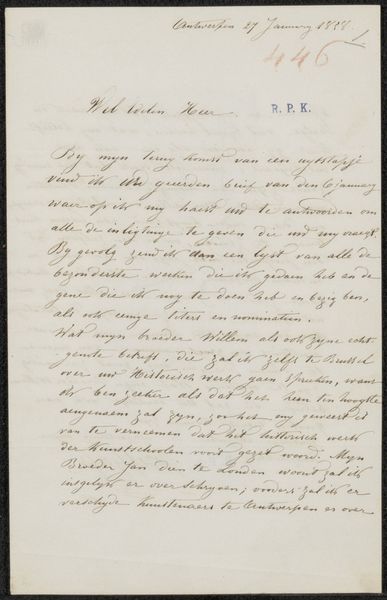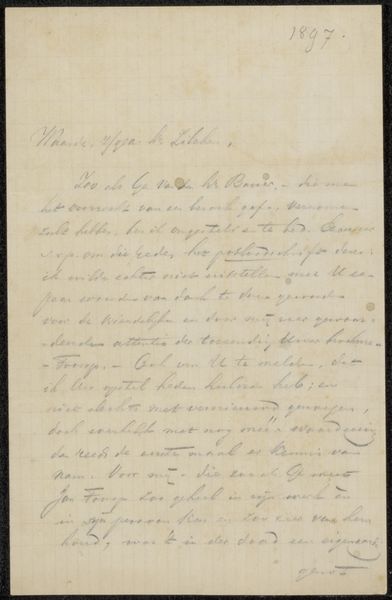
drawing, paper, watercolor, ink, pencil
#
drawing
#
paper
#
watercolor
#
ink
#
pencil
#
watercolor
Copyright: Rijks Museum: Open Domain
Editor: Here we have "Brief aan de heer Caramelli," which translates to "Letter to Mr. Caramelli." It’s a drawing on paper using watercolor and ink, possibly created around 1874-1875 by Willem Johann Martens. The delicate script and faded inks give it a real sense of history, like we're holding a whisper from the past. What stands out to you when you look at this? Curator: For me, it speaks volumes about the institutional and social networks artists relied on in that era. Letters were crucial. Consider how Martens would be navigating the art world - the formal requests, the seeking of patronage, the delicate negotiations with figures like 'heer Caramelli.' The letter *is* the art world operating at a very specific scale. Editor: That's a side of art history I often overlook. I guess I tend to focus on finished works in museums, not necessarily the social machinations that brought them there. So the letter is like evidence of Martens seeking patronage? Curator: Precisely. We can also think about the politics of imagery. What kind of image is Martens describing in the letter? Is it landscape, a portrait, something else? Who are these letters serving and for what purpose? The fact that Martens sent a telegraph shows urgency which could translate to some financial tension too. Who was Caramelli and what role might have he have played within the local art structures? What's your feeling on it? Editor: Wow, it's almost like each line in the letter could unpack a different socio-economic dimension of the time. What about the letterhead itself? It gives certain insights I assume... Curator: Absolutely. Even the stationery's quality reveals the extent of Martens' resources and perhaps even Caramelli's status! Now, how do you see all those clues weaving together in your mind to suggest a compelling picture about how artworks came into existence during that time? Editor: I will definitely pay more attention to the untold narrative layers behind art when thinking about it from now on! Thanks. Curator: Gladly, seeing art history as not a sequence of art objects and images is eye-opening and exciting.
Comments
No comments
Be the first to comment and join the conversation on the ultimate creative platform.
